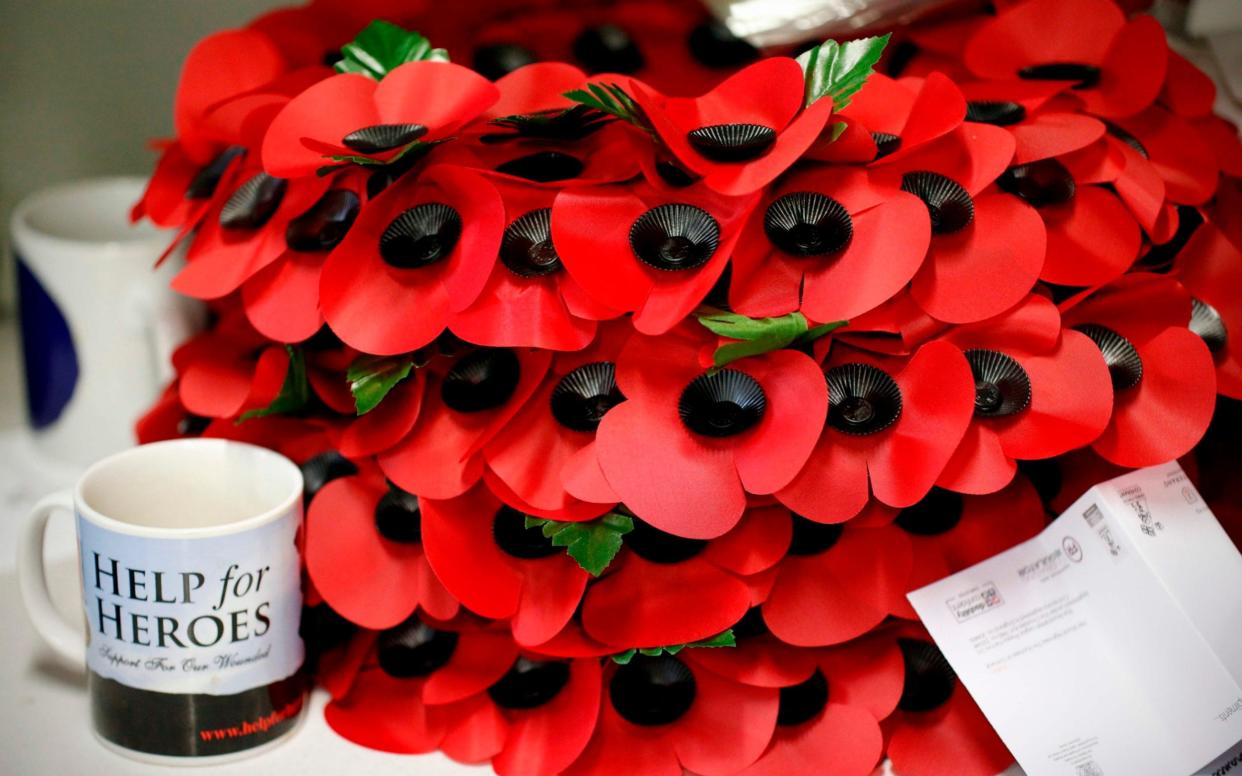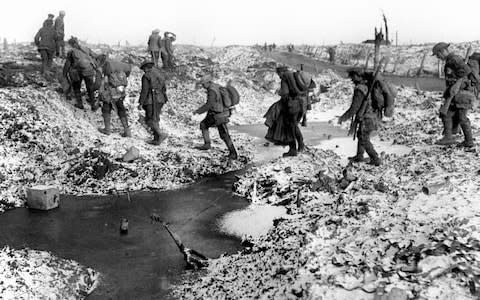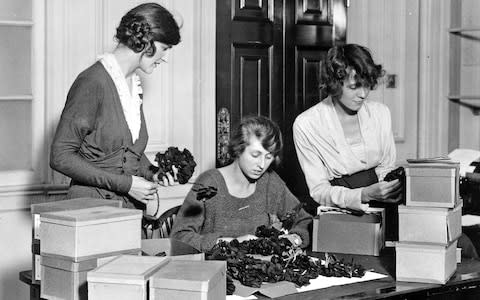Remembrance Day: Poppies, Armistice and why the act of remembrance matters

Tomorrow marks 100 years since the end of the First World War, with tributes in the shape of films, poetry and exhibitions taking place over the course of 2018. The events and arts have kept the centenary in our minds, however it will come to the fore on November 11.
Every year in November, the nation marks the wars that have scarred our past and the bravery of the men and women who fought them. Armistice Day and Remembrance Sunday, which both fall on Sunday November 11 this year, are a chance to remember not just those who fought, but what they fought for.
From how the first Armistice Day came about to the ways in which we commemorate the fallen today, here is everything you need to know about how (and why) we pay our respects.
Origins of Armistice Day
Armistice Day, held on November 11 every year, commemorates the signing of the armistice between the Allies and Germany at 11am on 11 November 1918 - the eleventh hour of the eleventh day of the eleventh month.
Although hostilities continued in some areas, the armistice essentially brought an end to fours years of fighting in the First World War.
In Britain, it is tradition to pause for a two minute silence at 11am on November 11 to remember those killed in the two world wars and the British servicemen killed or injured since 1945.
The armistice was signed in Ferdinand Foch's railway carriage in the remote Forest of Compiègne, north of Paris, at 5am on 11 November 1918, and came into force at six hours later, at 11am. (Incidentally, in 1940 Hitler forced the French to sign an armistice on German terms in the same railway carriage.)

French military commander Foch was in charge of leading the negotiations and signing the agreement which made it impossible for the German army to recommence fighting.
The Treaty of Versailles signed six months later acted as the lasting peace treaty between the nations.
The armistice forced the Germans to evacuate invaded countries and territories within two weeks. They also had to surrender a significant amount of war material, including five thousand guns, 25,000 machine guns, 1,700 planes.
Germany, exhausted by war and with a nation of hungry citizens, reluctantly accepted the terms.
The main commemorative events
Armistice Day is also called Remembrance Day and they both refer to November 11. This year Armistice Day falls on a Sunday. It is not to be confused with Remembrance Sunday which always falls on the second Sunday in November; by chance, this year both of these days fall on the same day.
On November 10, the Queen will attend a Festival of Remembrance at the Royal Albert Hall, hosted by the Royal British Legion.
The following day she is expected to attend a special service at Westminster Abbey alongside German President Frank-Walter Steinmeier, as well as attending events held at the Cenotaph. Every year the Royal family, politicians and armed forces attend a service there.
Last year, for the first time, the Queen and Duke of Eduinburgh watched proceedings from a balcony, as the Prince of Wales stepped in to represent his mother. It was the first time the Prince laid the wreath at the Cenotaph.
It was announced earlier this year that families of First World War veterans will be allowed to march past the Cenotaph to commemorate the sacrifice of their loved ones.
A total of 10,000 people are usually allowed to take part in the annual march but ministers announced today that they are allocating an additional 10,000 places which will be open to people with an emotional connection to the Great War.
Schools, offices and churches up and down the country usually take part in a two-minute silence at 11am and hold services at war memorials on either or both days.
November 11 is also marked around the world. After the Second World War, many countries changed the name of the day from Armistice Day to Remembrance Day, while the US chose to call it Veterans Day and made the day a federal holiday.
This year, Donald Trump and Vladimir Putin will join Emmanuel Macron at a military parade in Paris to commemorate the veterans and mark the 100th anniversary of Armistice Day.
Remembrance Sunday commemorations will take place at 11am at The Cenotaph, Whitehall, London. This year,
At the National Memorial Arboretum, Armistice Day will be commemorated with a service of remembrance outdoors at the Armed Forces Memorial. A shaft of sunlight bisecting the monument hits the central bronze at 11am, marking the hour the armistice became effective.
Two minutes of silence
The first Remembrance Day in Britain and the Commonwealth was held in 1919. However, Australian journalist Edward George Honey is originally thought to have proposed the idea of a two-minute silence in a letter published in the London Evening News in May 1989.
King George V later issued a proclamation calling for a two minute silence, it said: "All locomotion should cease, so that, in perfect stillness, the thoughts of everyone may be concentrated on reverent remembrance of the glorious dead."
The Royal British Legion says of remembrance: “Great Britain still believes strongly in remembering those who fought not only in World Wars, but the more than 12,000 British Servicemen and women killed or injured since 1945.
"The Royal British Legion supports silences observed during both Remembrance Sunday services and on 11 November, Armistice Day, itself. The act of Remembrance rightly has a place in - and impact on - our lives, no matter which day of the week it might fall upon."
Why we wear poppies
In the spring of 1915, shortly after losing a friend in Ypres, Canadian doctor Lieutenant Colonel John McCrae was inspired by the sight of poppies growing in battle-scarred fields to write the now famous poem In Flanders Fields.
His poem moved American teacher Moina Michael who began making and selling silk poppies to friends to raise money for the ex-service community.
Before long, poppies made their way to the UK and became the symbol of the Royal British Legion when it was formed in 1921.
The first ever 'Poppy Appeal' in the UK that year raised over £106,000 for war veterans. The following year, a poppy factory was set up by Major George Howson MC, giving jobs to disabled former servicemen.
The bright red poppy is regarded as a resilient flower which managed to flourish despite fields being destroyed by war.
Some people say you should wear the poppy on your left side, so it is worn over the heart. The left is also where military medals are worn. Others say only the Queen and Royal Family are allowed to wear a poppy on the right, which is an urban myth.
But a Royal British Legion spokesman said there is no right or wrong side, "other than to wear it with pride".

In Flanders Fields, a poem written by Canadian physician Lieutenant-Colonel John McCrae in 1915, is said to have inspired the enduring symbol of the war.
It describes the poppies that grew over the graves of the fallen soldiers; he is said to have written it after attending the funeral of his friend Lieutenant Alexis Helmer, who died in the Second Battle of Ypres.
In Flanders' fields the poppies blow
Between the crosses, row on row,
That mark our place: and in the sky
The larks, still bravely singing, fly
Scarce heard amid the guns below.We are the dead. Short days ago
We lived, felt dawn, saw sunset glow,
Loved and were loved, and now we lie
In Flanders' fields.Take up our quarrel with the foe;
To you from failing hands we throw
The torch; be yours to hold it high,
If ye break faith with us who die
We shall not sleep, though poppies grow
In Flanders' Fields.
Buying a poppy in 2018
Poppies are available from late October when the Royal British Legion Poppy Appeal launches. Street collectors will be selling them all over Britain up until November 11.
Collectors aim to be at all major supermarket chains, train stations and high street stores. You can also buy poppies online from the Royal British Legion's website. The suggested donation is £1 per poppy.

The net income from the appeal goes to the Royal British Legion Benevolent Fund and armed forces' dependents, veterans and those bereaved.
The poppies are made at the Poppy Factory in Richmond, Surrey where 30 workers (70 per cent of the workforce) are disabled or suffer from chronic illness. The public usually buy nearly 45 million poppies each year.

 Yahoo News
Yahoo News 
